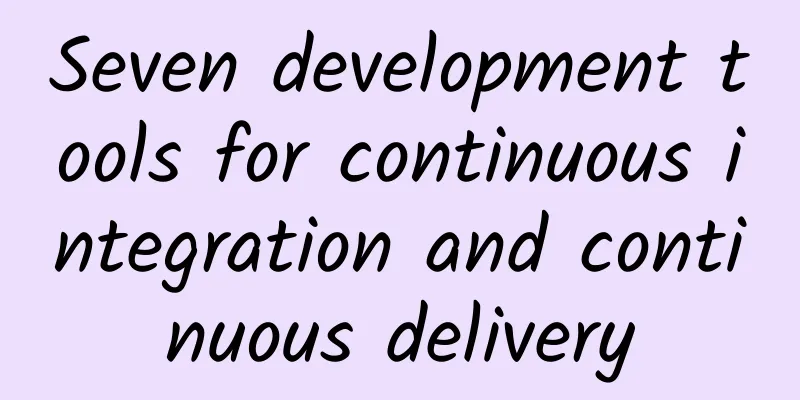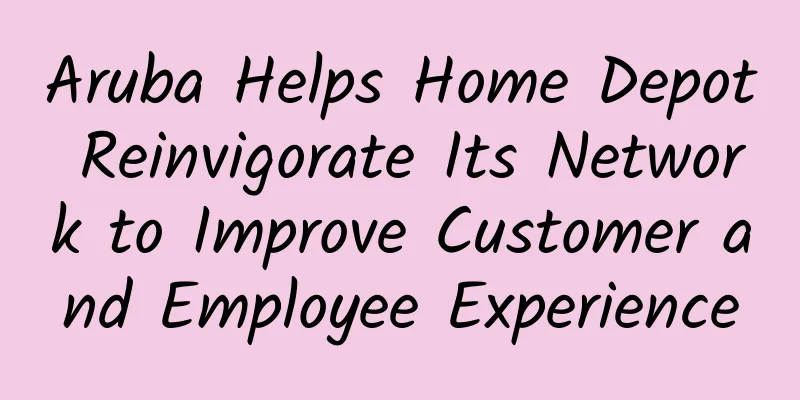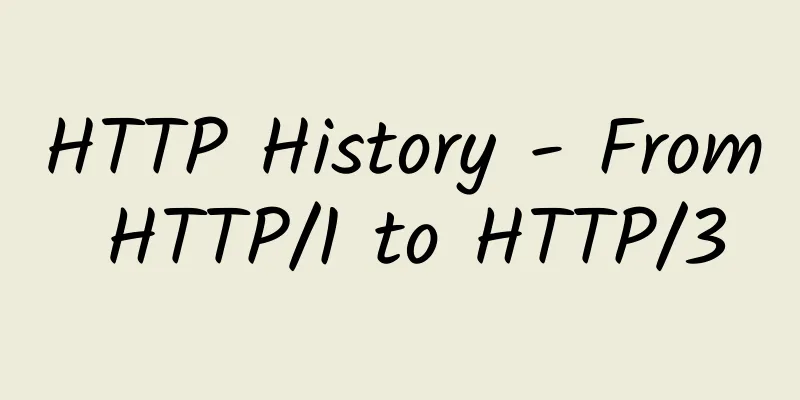Seven development tools for continuous integration and continuous delivery

|
The software development cycle requires some automated tools that can help developers speed up. The most important purpose of the tools is to promote the continuous integration and delivery of software projects. Through CI/CD tools, development teams can keep software updated and put it into practice quickly. Jenkins is the most famous CI/CD system tool and can quickly become a development engine and management development. Jenkins facilitates plugin development, provides functions for extending version control systems and provides support for IBM. Jenkins was first launched by the Hudson project separated from Sun Microsystems. Its latest version is 2, which improves usability and security. But Jenkins isn’t the only option when it comes to continuous integration and continuous delivery. Companies like CircleCI, GitLab, and JetBrains also offer CI/CD tools for developers. Atlassian Bamboo Atlassian Bamboo provides a wealth of features, from building and deploying Docker containers to running applications on Amazon Web Services. Specialized agents can be used for hot fixes and critical builds. Extensibility has always been seen as a thorn in Jenkins' side, and here, Randall Ward, CEO of Appfire, Atlassian Business Partners provides add-ons and services to enhance Bamboo's advantages. Atlassian did mention extensibility, and Jenkins users have found the tool to have "major performance hurdles." Bamboo works by polling agents and extending agent functionality. Appfire uses Bamboo as a Swiss Army knife, integrating testing with third-party add-ons, and deploying code. Bamboo features code visibility, ensuring users see complete code changes from the last deployment to the last deployment. It integrates with other Atlassian products, including the Bitbucket Git code management solution, the Jira project management solution, and the HipChat team chat application. CircleCI CircleCI also emphasizes scalability, in addition to being able to test everything, it also performs Jasmin unit tests for mobile applications. CircleCI helps developers bring Docker files to production. CircleCI provides an orchestration layer and a workflow tool that automates code changes and pushes code to the data center. Started in 2011, CircleCI began as a multi-organizational SaaS option. It is an alternative to Jenkins, and users do not need to manage their own servers. Ruby, Python, and AJAX applications are its strengths. It can now be deployed outside the firewall, and unlike Jenkins, it is open source and an enterprise solution. CircleCI can be extended beyond what Jenkins can handle, and its configuration is written in code rather than done in the server. Eclipse Hudson Hudson, the predecessor of Jenkins, was managed by the Eclipse Foundation five years before Oracle handed over the project. Oracle inherited Hudson when it acquired Sun Microsystems in 2010, but Jenkins developers did not agree on the direction of the Oracle project. The latest update was in February. Hudson is written in Java and runs on servlet containers such as Apache Tomcat. It can use version control tools such as Git and Subversion. "We on the Hudson team are committed to enhancing Hudson on a foundation that has already been built, with a focus on making Hudson a suitable platform for continuous delivery as well as continuous integration," an Eclipse representative said. "As a result, you will see new features in the tool that specifically address the needs of large enterprises using Hudson at scale and with complex build pipelines." According to an Eclipse case study, Hudson user Cleo, which provides business integration software and services, evaluated Jenkins as a replacement for Hudson because Jenkins maintains most of the Hudson plug-ins. "We abandoned the idea after the core functionality of Jenkins was less reliable than Hudson's," said Stuart Lorber, a Cleo release engineer. GitLab CI Available as SaaS or outside the firewall, open source GitLab CI can be executed on any platform and supports languages, including Unix, Windows, and OS X. Users can automatically scale up and down virtual machines for instant processing and minimization. Other features include multi-language support, real-time logging, multiple jobs per stage pipeline definition, and Docker support for testing and building Docker images. Scalability is also an advantage. GitLab CI is part of the GitLab code-hosting platform and is designed to provide an easy setup for continuous integration. Setting up CI used to be tedious, and we want to make it very simple. GitLab CI does not require a lot of management, and tests are executed in GitLab Runner, which is written in Go and provides multi-platform and multi-language capabilities. Because GitLab CI is integrated with GitLab, users do not need to set up a new project. Users add a file to describe how you want to test the library. JetBrains TeamCity JetBrains TeamCity CI/CD server integrates tools such as Apache Maven build management and JetBrain's own YouTrack issue tracking tool. We provide a complete experience with built-in functionality plugins. TeamCity is not open source and has a web interface and management capabilities. The platform has IDE plugins for Eclipse, Microsoft Visual Studio, and JetBrains IntelliJ. It also provides dynamic test reports. TeamCity is a product that has been around for 10 years. It was derived from JetBrains and has evolved into a very mature product. ThoughtWorks GoCD ThoughtWorks GoCD is an open source continuous delivery system that provides a "bill of materials" deployment. The agent grid provides parallel processing through pipelines and versions, and templates allow reusing configured pipelines. It supports CD out of the box, without installing additional plugins. GoCD differs from Jenkins in that it deploys pipelines and simplifies continuous delivery. GoCD can be installed or built on the cloud. ThoughtWorks Snap ThoughtWorks Snap provides cloud-based continuous integration and delivery capabilities. Snap is completely human-operated in the cloud, and it is user-oriented "no infrastructure required". Hosted deployments can be set up in cloud platforms including GitHub, Amazon Web Services, DigitalOcean, and Heroku. Merge requests are tested to ensure that they are fully merged. Snap is free to use public storage on GitHub, with a load of private storage. Recently, Docker support was added to Snap, and Docker images can be used by software delivery and deployment. |
<<: How Amazon can achieve continuous delivery
>>: The difference between continuous delivery and continuous deployment
Recommend
Why do mobile network testers still pursue speed at all costs?
Communications operators must refocus on covering...
In the 5G era, smart services will become the new normal
More than a year after its official commercial la...
Different Lianyu Yitong, different SD-WAN+
I am a bit scratching my head. Which word should ...
Friendhosting Valentine's Day promotion: 30% off all VPS/virtual hosts, VPS half-year payment from 11.9 euros
Friendhosting has launched a 30% discounts for Va...
Wireless charging has three constraints on market demand
Wireless charging technology has been around for ...
Why is a good network 30% construction and 70% operation and maintenance? How does IGL do intelligent operation and maintenance?
A good network also has a “30% to 70%” structure ...
Summary information: CUBECLOUD/zorocloud/Eurasia Cloud/Bluemi Cloud
Recently, we have received product promotion info...
Did you understand the three stories Guo Ping told at the Huawei Connect Conference?
[51CTO.com original article] Just last week, the ...
Energy-saving building 5G solutions are the key to green buildings
Building equipment suppliers are prioritizing gre...
"2021 Bots Automation Threat Report" in-depth analysis of the four characteristics and five scenarios of automation threats
As Bots automation tools become more platform-bas...
Five key trends in the Internet of Things in 2017
The Internet of Things (IoT) technology has quiet...
Major upgrade! AsiaInfo Security releases the high-performance AE 40G antivirus software, creating the first level of border protection
At 2 pm on April 17, AsiaInfo Security's AE V...
Traefik Enterprise Practice: TraefikService
Introduction The routing rules of traefik can imp...
Hengchuang Technology 618 special offer, cloud server as low as 28% off, US/Japan/Hong Kong CN2 line annual payment starts from 296 yuan
Hengchuang Technology has released this year'...
In the 5G era, how will data centers be defined?
There are still many unanswered questions about 5...









